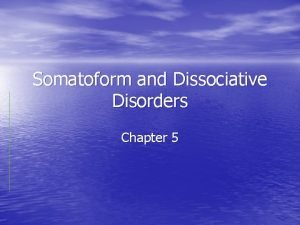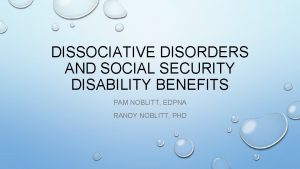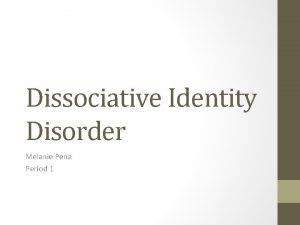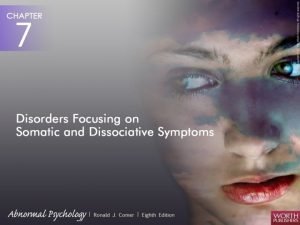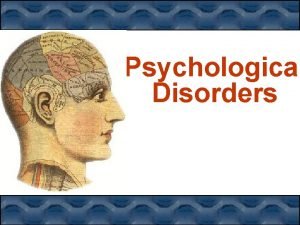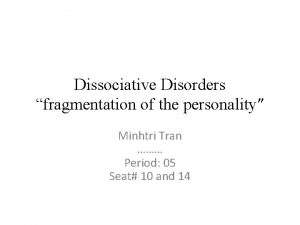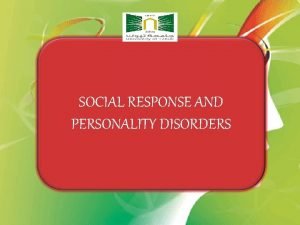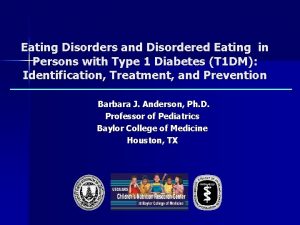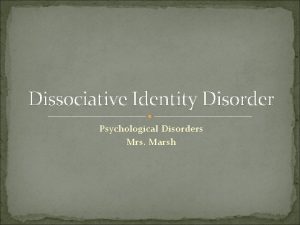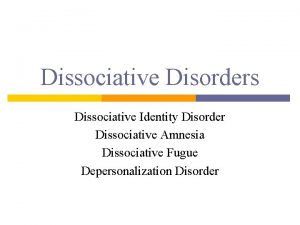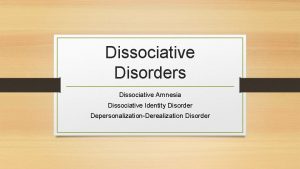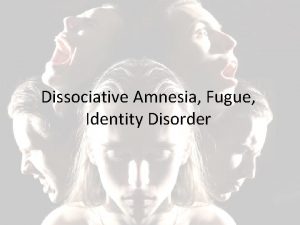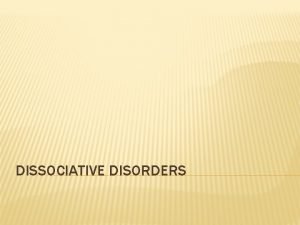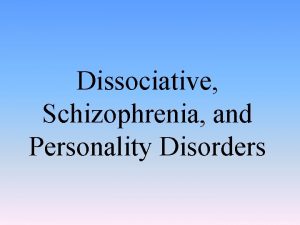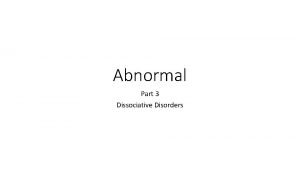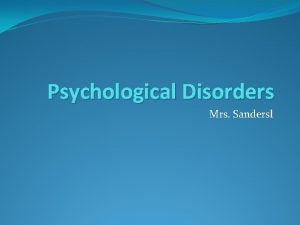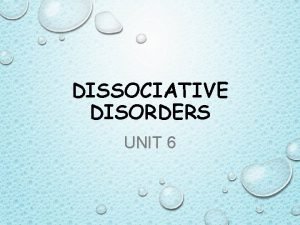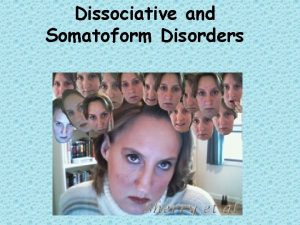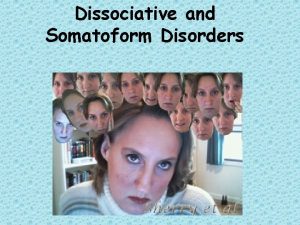Dissociative Identity Disorder Psychological Disorders Mrs Marsh Definition












- Slides: 12

Dissociative Identity Disorder Psychological Disorders Mrs. Marsh

Definition A dissociative disorder, formerly called multiple personality disorder, in which an individual develops more than one self or personality.

Associated Features �Host �The core personality. �The primary identity associated with their given name. �Usually passive and dependent. �Possibly also depressed or guilty.

Associated Features �Alters �The personalities. �Each has its own pattern of perceiving, thinking, and relating as well as its own style of behavior, personal history, and self-image. �Each may have different ages, races, levels of intelligence, affective styles, genders.

Associated Features �At different times, one of these identities or personality states takes control of the person’s behavior. �The other alters may actively perceive what is happening. �An alter may have access to memories of other alters. �The transition from one alter to another is triggered by psychosocial stress or a personally significant stimulus.

Prevalence �After a couple famous novels and books as well as broadening of the definition and inclusion in the DSM, cases of the disorder increased. �Between 1920 -1970: A handful of cases were reported. �Since 1970: Cases have increased into the thousands. �Many wondered whether the increase in prevalence was due to overdiagnosis or people faking symptoms. �Many are still skeptical of the disorder.

Items from the Structured Clinical Interview for DSM-IV Dissociative Disorders-Revised Scale Item Amnesia Have you ever felt as if there were large gaps in your memory? Depersonalization Have you ever felt that you were watching yourself from a point outside of your body, as if you were seeing yourself from a distance (or watching a movie of yourself)? Have you ever felt as if a part of your body or your whole being was foreign to you? Have you ever felt as if you were two different people, one going through the motions of life, and the other part observing quietly? Derealization Have you ever felt as if familiar surroundings or people you knew seemed unfamiliar or unreal? Have you ever felt puzzled as to what is real and what’s unreal in your surroundings? Have you ever felt as if your surroundings or other people were fading away? Identity confusion Have you ever felt as if there was a struggle going on inside of you? Have you ever felt confused as to who you are? Identity alteration Have you ever acted as if you were a completely different person? Have you ever been told by others that you seem like a different person? Have you ever found things in your possession (for instance, shoes) that belong to you, but you could not remember how you got them?

Diagnostic Criteria � The diagnosis is given to people who experience two or more distinct identities or personality states, each with an enduring pattern of perceiving, relating to, and thinking about the environment and the self. � At least two of the identities or personality states recurrently take control of the person’s behavior. � The person is unable to recall important personal information, well beyond what could be explained by ordinary forgetfulness. � The disturbance is not due to substance use or a medical condition.

Etiology � May have failed to develop an integrated and continuous sense of self because they were severely traumatized or abused in their childhood. � Alters develop as an escape from the horrors of their daily reality. � Most people with Dissociative Identity Disorder report having been victims of abuse. � However, most people who have been abused do not develop the disorder. � An unknown factor seems to predispose certain traumatized children to develop different personalities in response. � Abuse may also trigger alterations in brain functioning.

Treatment �Therapy �Similar to those who suffer PTSD. �Help to integrate the alters into a unified whole and develop adequate strategies to deal with the painful memories of the past and current stress.

Treatment �Hyponosis �Cognitive-behavioral therapy �To change the client’s dysfunctional attitudes and/or beliefs: that the different parts of the self are separate selves that the victim is responsible for the abuse that it is wrong to show defiance that the host cannot handle painful memories that one of the alters hates the parents that the host must be punished that neither the self nor others can be trusted.

Prognosis �Some positive outcomes. �Example: �In a study of 135 individuals with the disorder, 54 were and reassessed after a 2 year period and continued to show significant improvement.
 Dissociative disorder
Dissociative disorder Dissociative identity disorder
Dissociative identity disorder Dissociative identity disorder social security disability
Dissociative identity disorder social security disability What is dissociative identity disorder
What is dissociative identity disorder Dissociative disorders
Dissociative disorders Chapter 29 somatic symptom and dissociative disorders
Chapter 29 somatic symptom and dissociative disorders Types of dissociative disorders
Types of dissociative disorders Dissociative amnesia
Dissociative amnesia Dissociative disorder not otherwise specified
Dissociative disorder not otherwise specified Dissociative disorder not otherwise specified
Dissociative disorder not otherwise specified Austin woodbury
Austin woodbury Dissociative disorder not otherwise specified
Dissociative disorder not otherwise specified Dissociative disorder
Dissociative disorder

